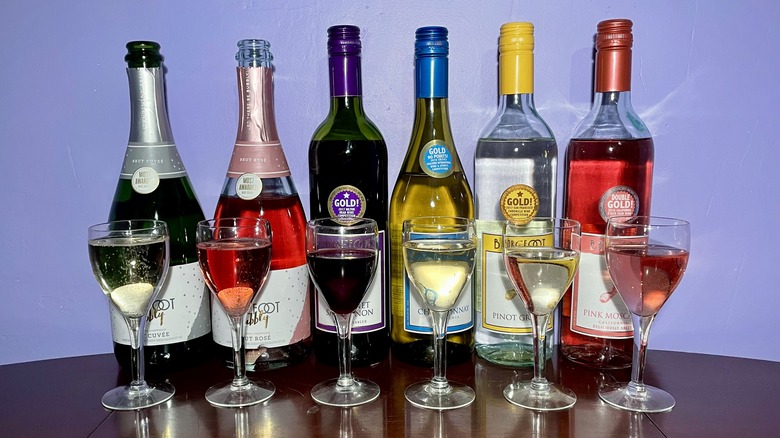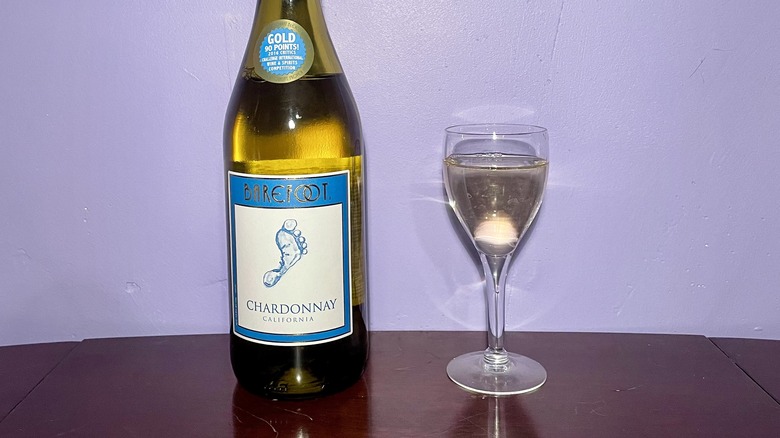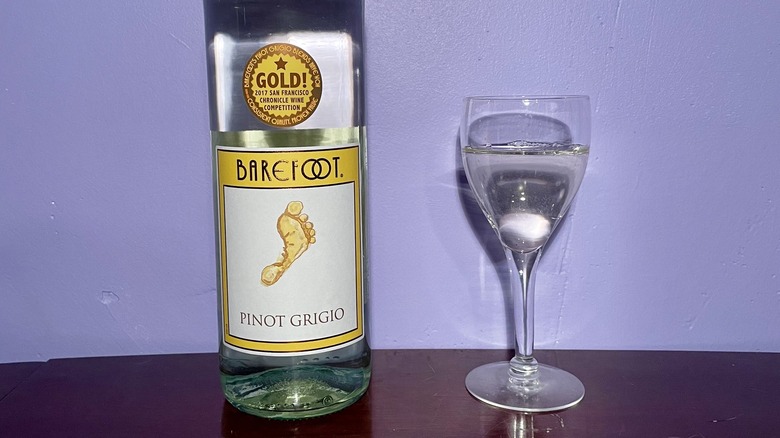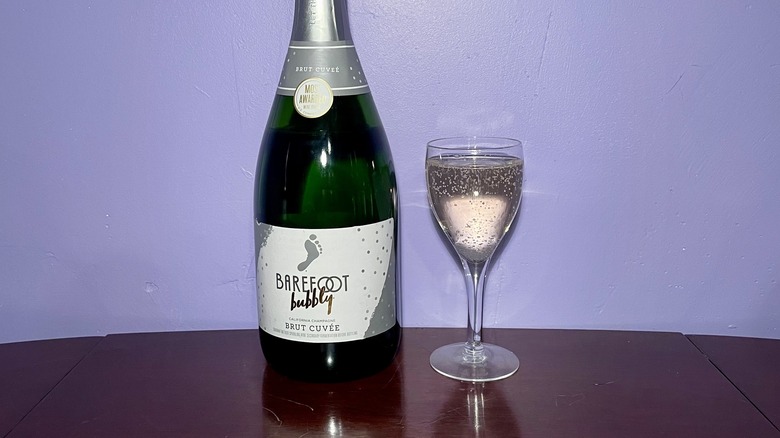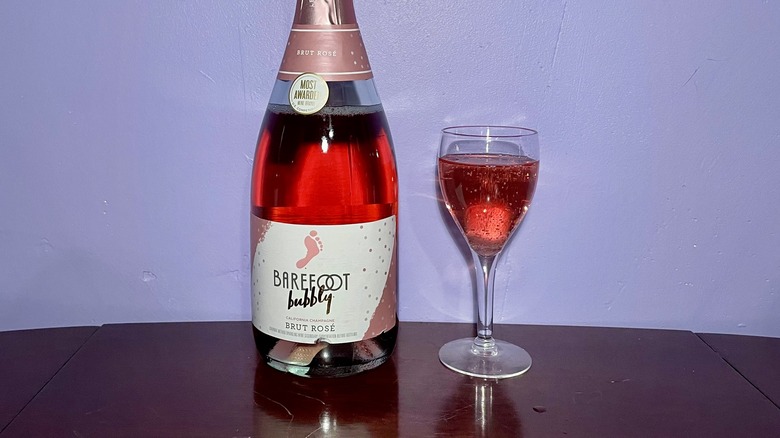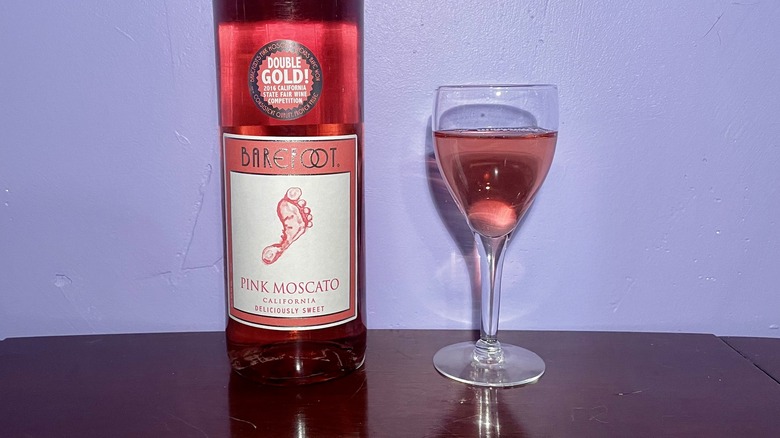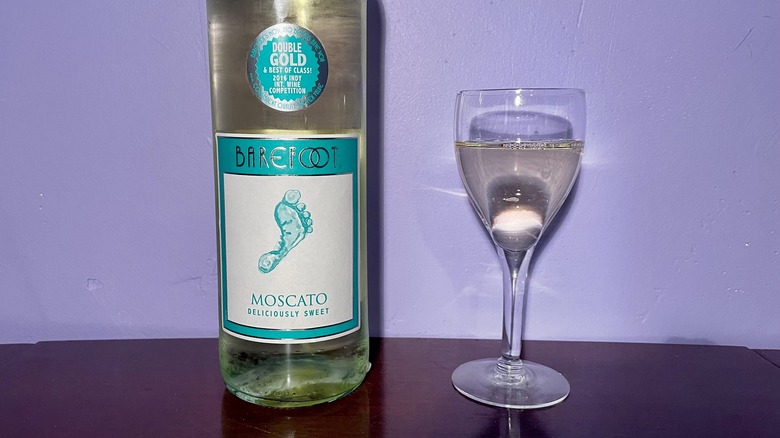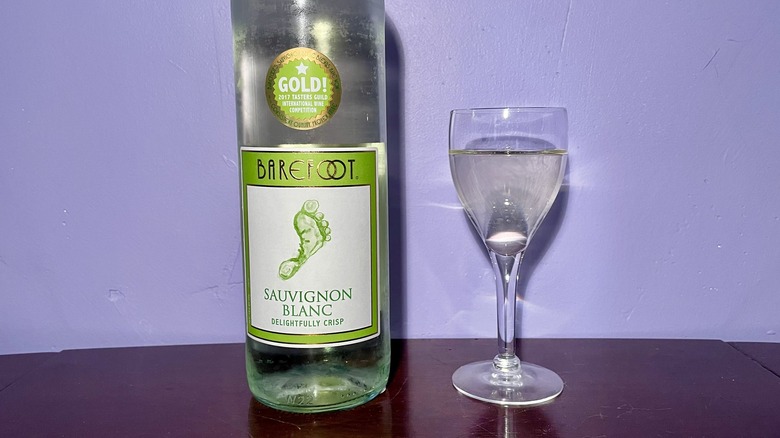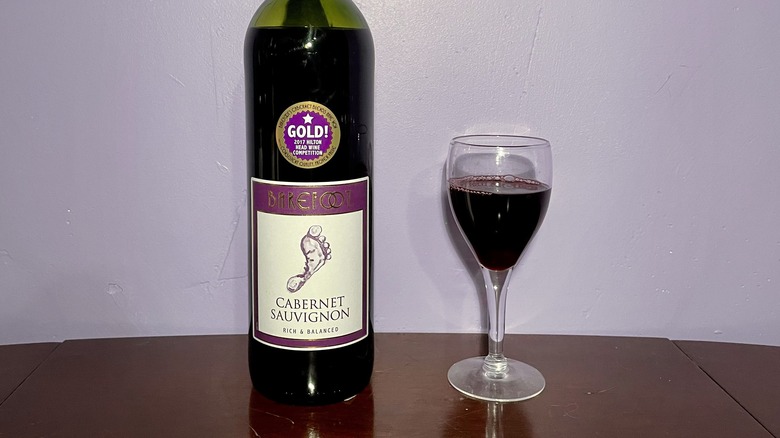Barefoot Wines, Ranked Worst To Best
Barefoot Wine has been making affordable California-produced wine since way back in 1965. The company matured its wine over time and found its footing in 1995 when winemaker Jennifer Wall joined the team. Barefoot Wine is approachable and brings levity and accessibility to a genre of drink that often takes itself very seriously.
The company makes a wide range of wine types. We tried eight of them to see which ranks as the best in the line. As part of our judging, we tasted each wine against each other, but also against what the variety of wine should taste like. We are not comparing Barefoot to any other specific wines, especially more expensive wines, as that would not be a fair comparison. But we are taking into account if the varietals offer the flavors we expected while still embodying the joyful and lighthearted spirit of the brand.
Some recommendations are based on first-hand impressions of promotional materials and products provided by the manufacturer.
8. Chardonnay
We tried a few white wines, most of which offered a similar pale yellow hue. The visual difference was that the chardonnay was packaged in a green bottle, initially making it appear darker, but rest assured, it was the same color as the rest.
The initial aroma blended a sugar-sweet vanilla scent with a hint of a metallic edge. It is common to age chardonnay in oak barrels, giving the wine a distinct oaked flavor. However, we were surprised to find the prominent taste of the burnt end of a stick. Think of when you make a roasted marshmallow on the fire and the end of the stick ends up a little charred with burnt sugar. That is the flavor here, along with some citrus notes thrown in. It offers a bit of a honeyed aroma but does not follow through with the round taste we expected. There was also a noticeable aftertaste that we couldn't quite place.
Chardonnay is typically a friendly wine that is neither super light and crisp nor super heavy, and while dry, it is not super dry. While this chardonnay has these characteristics, we cannot get past the aftertaste and the up-front campfire.
7. Pinot grigio
The pinot grigio is an incredibly pale yellow color. Some wines have notes of oak from being aged in oak barrels, but this pinot brigio had notes of metal instead. The initial bouquet of the pinot grigio was a little flat and not overly aromatic. The mouthfeel was surprisingly full, considering the lack of aroma.
This wine was highly acidic, which is typical of the variety, but this went a little overboard. Instead of getting floral notes, we tasted predominantly citrus. The balance between the flavor and the surprising heaviness of the wine made for a somewhat awkward drinking experience, as if this bottle did not know exactly what it wanted to be, which was similarly emphasized by the metallic notes.
That said, the wine has its place. This wine is best served chilled, and its zesty taste would be a welcome addition to a cookout or for a warm summer day. It offers a crisp and full body without coming off overly heavy.
6. Brut cuvée
Barefoot brut cuvée is a perfectly acceptable dry sparkling wine. The top popped beautifully, and immediately, we were met with a crisp bouquet that tickled our nose. The bubbles are fine and plentiful. The first sip of this wine brought a weirdly grapey flavor and a noticeable tartness. We are aware wine is made from grapes, but the fruitiness from this wine was more reminiscent of grocery store grapes. This, however, mellowed out as we drank the wine.
We appreciated that, true to the label, this was a dry, bubbly wine. This wine would be fine sipping at a casual event but would excel as a mimosa base. The dry base would mellow out the sweetness of orange juice, and the underlying notes of orange and grape would blend well. Additionally, since this is a more affordable sparkling option than many other brands, you will not feel bad mixing it in a cocktail.
This wine does everything it promises on the label, and while it is not a premiere example of the genre, it is fun and drinkable.
5. Brut rosé
The brut rosé is a far more interesting sparkling wine than the brut cuvée. If fun and lighthearted are the goal, this wine definitely brings it. Once again, we have a fine bubble and a top that popped quickly. The color is a lovely pink shade, which pairs nicely with the floral aromas that reminded us of honeysuckle. The flavor is also far more floral than we initially expected, with hints of honeysuckle, rose, and vanilla. This wine is considered to be dry, but it did taste sweet to us, so if you want a super dry, bubbly wine, this may not be for you. But because of this, it did have a soft drinkability to it.
Because of the more pronounced floral flavors, we likely would not use this one for a mimosa, instead, this bubbly wine feels better for sipping on its own, perhaps in a casual get together setting. This wine definitely embodies Barefoot's agenda of making fun and unpretentious wines.
4. Pink Moscato
Speaking of fun and unpretentious wines, it doesn't get more fun than Pink Moscato. Moscato is a sweet wine that is often associated with being an early entrance to wines for young people. This Pink Moscato has the same sweet and floral bouquet we have come to expect from a Pink Moscato. There are definitely notes of bath soap — you know the kind we mean: the kind that smells like peonies and other spring flowers all mixed together.
The wine is, of course, quite sweet, but it is supposed to be. However, this wine may take sweet to a whole new level, and it does verge into the syrupy territory. In addition to those spring flowers, we tasted notes of rose and strawberry. This is about as friendly as it gets for wines. This is a good wine for people who prefer sweeter wines and want something fun to drink either at home or in a crowd, just as long as your crowd enjoys a sweet wine.
3. Moscato
Barefoot loves its sweet wines, and it does them well; Moscato is no different. This Moscato offers a robust aroma with rose and orange blossom notes. The aroma is far more prominent than the other wines we tried and could likely be bottled as its own perfume. The taste drives home the initial smell. The flavor is sweet but not as syrupy as the Pink Moscato. Instead, the orange blossom comes out even more, being both lightly citrusy and bright while still maintaining the soft mouthfeel. There are additional notes of honey and peach, though it is not quite as acidic as we would have thought.
What was additionally surprising to us was the light bubble of this wine. This is not a sparkling wine, but it still offered a noticeable bubbling in the glass and a slight fizz in the mouth. This was a welcome addition, given how sweet Moscato wine is. The lovely, fruity bouquet is what you would expect from this grape and delivers an enjoyable drinking experience.
2. Sauvignon blanc
Barefoot sauvignon blanc is surprising and delicious. By this point in our tasting, we found that Barefoot's sweet wines tended to be better than its dry wines. There is nothing wrong with sweet wines, but we were pleasantly surprised by the drinkability of the sauvignon blanc, which is the driest white wine the company makes.
The initial aroma has hints of apples and pears. The taste brings out flavors of melon and light citrus, as well as the apples and pears from the aroma. The fruit flavors blend in an incredibly crisp, thin mouthfeel. This wine is light and refreshing. It would be great on a hot summer day or a cool fall one.
As a dry wine with noticeable citrus elements, it is not surprising that this wine is acidic, but it does not become astringent. It does not linger too long but instead leaves a clean, fresh finish.
1. Cabernet sauvignon
It was nice to find that this cabernet sauvignon was not just acceptable but also the best wine that we tried. Cabernet sauvignon is a rich, dry red wine. As budget cabernet sauvignon goes, Barefoot checks all the boxes.
The aroma right off the bat offers smooth cocoa. This wine is bold and noticeably fruity. We detected notes of cherry and light pepper. There were hints of vanilla. Overall, this wine brought the richness and dry qualities we wanted from the variety. Sure, other cabernet sauvignons may be better, more sophisticated examples of the style, but not at the price Barefoot offers. Not only is this cabernet sauvignon drinkable, but it holds true to the company's goal of making wine for the people. Instead of placing itself as a lofty aspirational wine, it meets people where they are, providing a wine that is easy to buy and drink. This wine is affordable and would be a great addition to a dinner party.
